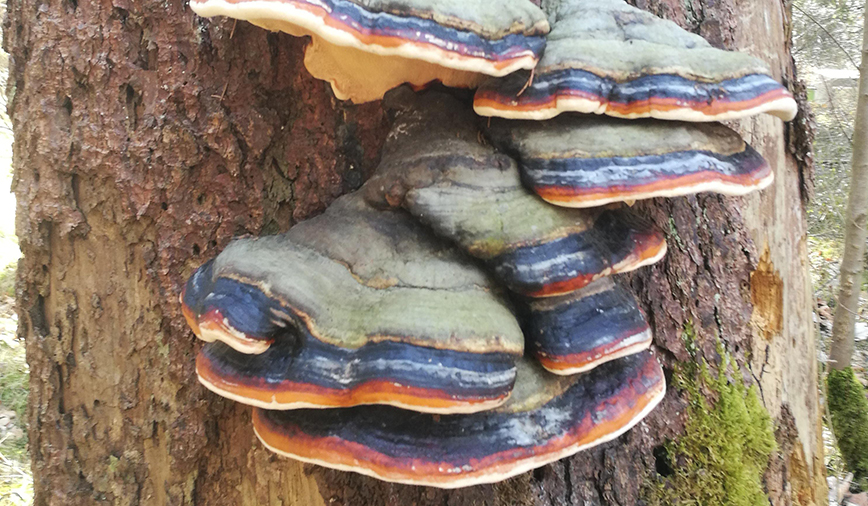Nature isn’t always pretty…unless it’s springtime. When spring is in the air, even the dowdiest woodland denizens take on a new radiance, brought to life by the return of longer days and warmer temperatures.
Take fungi, for instance. No, not the type that grows on those forgotten leftovers in the back of the fridge, but rather the sorts that can be found popping up in yards and natural areas all around the TriCities. Whether growing at ground level, or high in a tree, these unique organisms have a beauty all their own. (Taxonomists, scientists who classify living things, would be quick to point out that fungi also have a kingdom all their own. But that’s a topic for another time.)
Fungi, or mushrooms, are not plants, yet they have seasons just like flowers do. Certain mushrooms are more prevalent in spring, others in summer and still more in fall. Here in Kane County, spring is morel season.
Morels are to mushrooms what French poodles are to dog shows. They’re a fancy lot, closely related to truffles, that possess honeycombed caps ranging in color from creamy tan to deep gold. They vary in size from just over an inch to several inches tall and show a preference for growing on sites featuring dead elm trees and old apple orchards.
With these distinctive features, morels are not only pretty to look at, but also pretty easy to identify. In fact, in the 1943 book “Common Edible Mushrooms,” they were named one of the “foolproof four”—fungi so obviously different from anything else that they are considered unmistakable. (Yet another topic for another time: the “fatal five.”)
But morels aren’t just another pretty face, er, fungus, there on the forest floor. Like other fungi, they are decomposers. Beneath the ground, a network of threadlike structures called the mycelium works hard to break down dead plant material and provide nutrients to the growing fungus.
The mushrooms we see growing above ground are simply the fruiting bodies of the mycelium. They’re like the apples on an apple tree, with one important difference. Instead of producing seeds, mushrooms produce spores. These tiny, almost microscopic, particles travel away from the mushroom by the millions, borne by wind, water or even insects. If a spore lands in just the right spot—not too dry, wet, warm or cold—it grows a new mycelium.
The conditions that cause a morel mycelium to bear mushrooms are a bit of a mystery. Many known morel hotspots do not produce mushrooms annually, or even biannually.
One thing is for sure. With spring in the air, morels can’t be far behind.
Another thing that’s for sure—April 22nd was Earth Day, and many agencies around the area are celebrating. The St. Charles Park District’s Earth Day Festival will be held this Saturday, April 26th, at Campton Hills Park. Join us for a wide range of activities that include a bird walk from 7:30-9 a.m.; an ecological restoration project from 9-11:30 a.m.; and the festival itself, which will run from 12-3 p.m.
The theme for this year’s event is “Keeping it local,” and the focus will be on home-grown fun. Featured attractions for the afternoon include St. Charles musician Steven Keefe and his Family Jug Band songs; wagon rides pulled by Clydesdale horses from Batavia’s Lake Run Farm; drumming with the Fox Valley Drum Circle; native wildlife from Kane Area Rehabilitation & Education (K.A.R.E.); Home Depot birdhouse building; planting activities with the folks from the Geneva Green Market; gardening advice from the University of Illinois Extension’s Master Gardeners; and the Illinois Natural History Survey’s Traveling Science Center. The event will be held rain or shine, and all activities are free. Hope to see you there!
Pam Otto works for the St. Charles Park District and can be reached at potto@stcparks.org or 630-513-4346.

